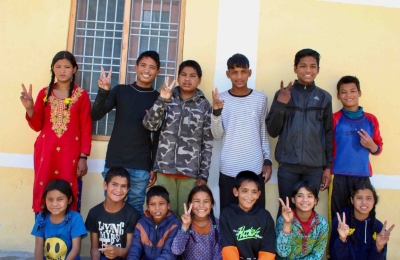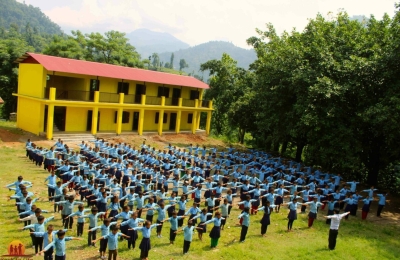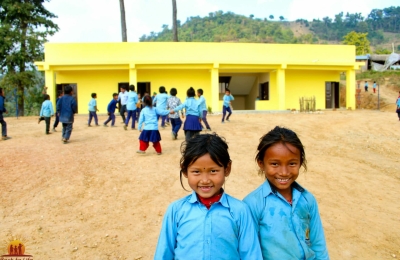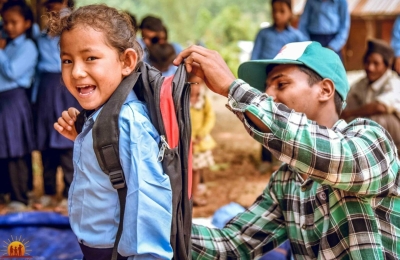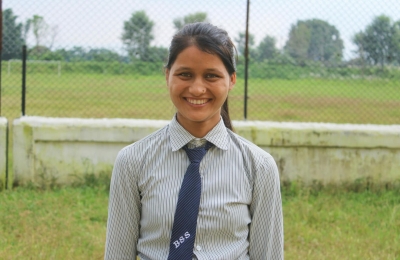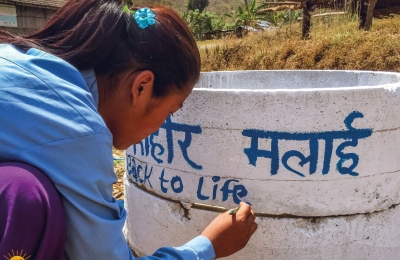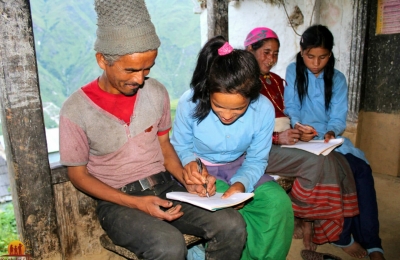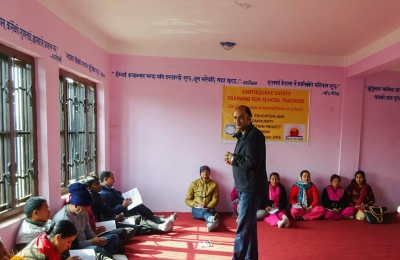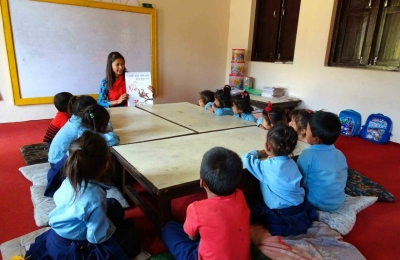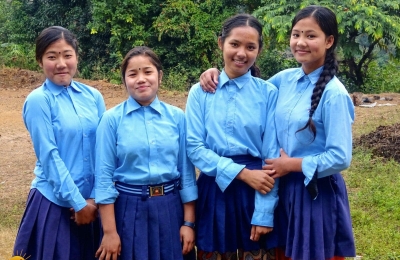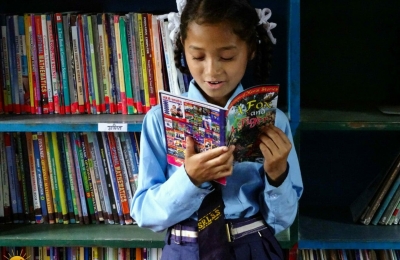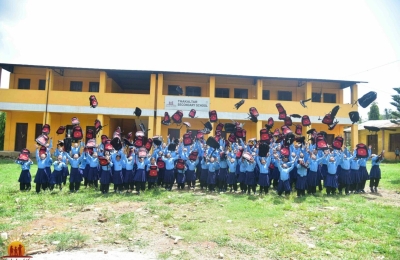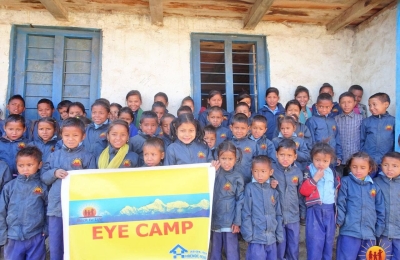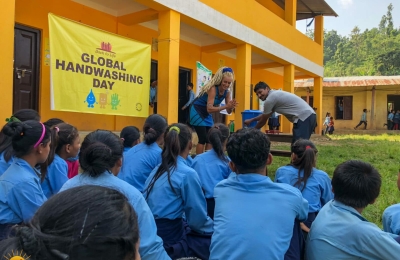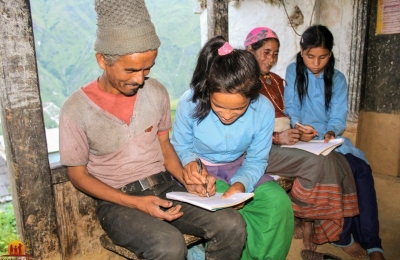My bumpy road to deceleration
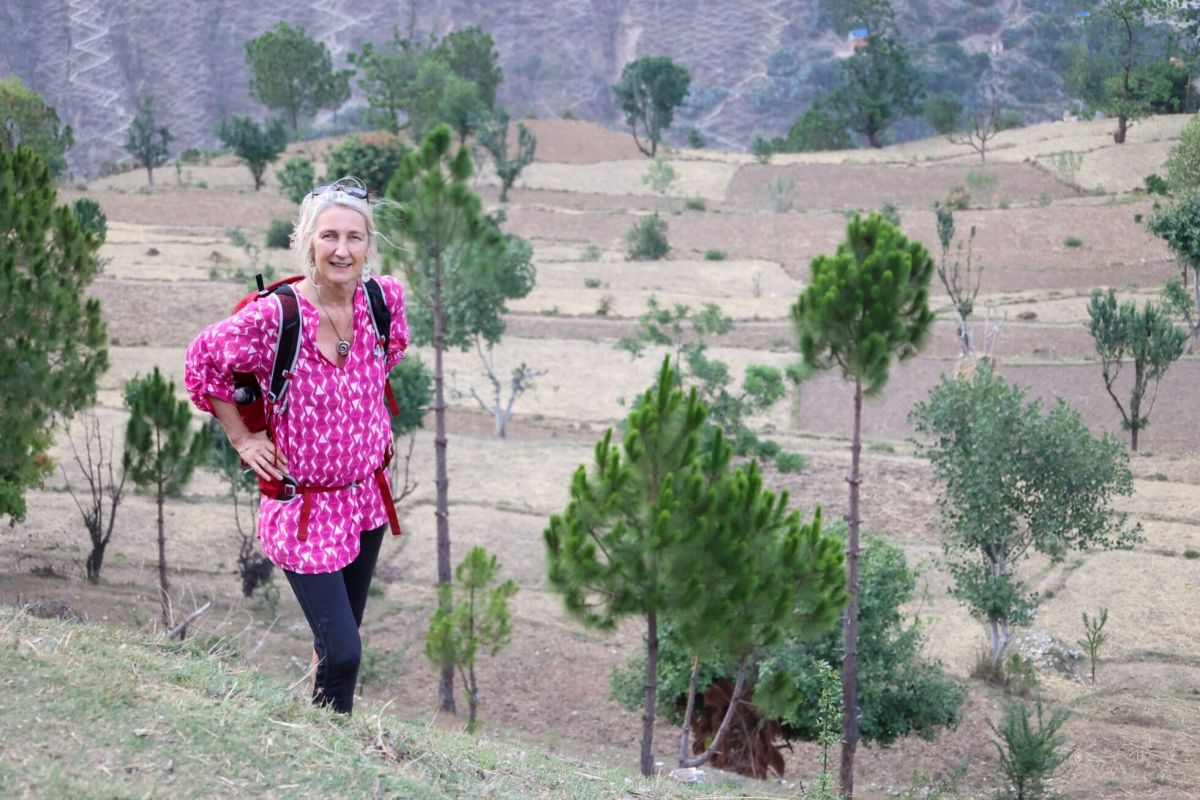
During my 16-day journey through the mountainous region of Mugu, I experienced deceleration like never before: no cell phone reception, no power for the laptop, no news about Corona, the Ukraine war or the looming climate crisis, no Netflix or social media either, and instead of traffic jams on overcrowded roads, there are dirt roads on which resistant jeeps move at a maximum of 10km/hour, defying seemingly insurmountable landslides and demanding everything from man and machine. Sunrise and sunset determine the rhythm of the day.
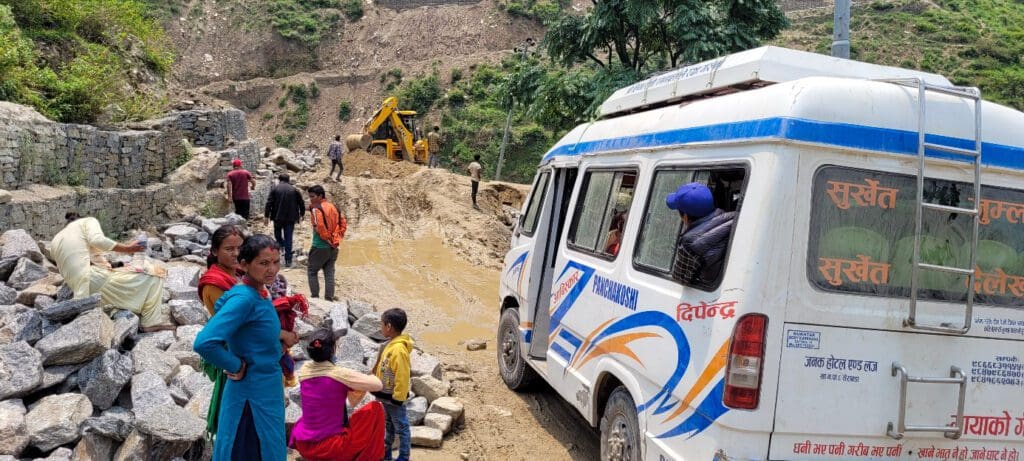
Already the journey to the mountain region is an adventure. With a rickety, twin-engine plane we fly into the high mountains to Bajura/Kolti. With old jeeps we drive on a breakneck track always following the Karnali River. I learn that this scree road, called the “Karnali Corridor Project” by the Nepalese, is to be extended to China at an undisclosed date in the future. I wonder how long this will take and whether the landslides that pile up in front of us every few minutes will be removed and whether the slope will then be secured against falling rocks. Such security concerns are not known here and they are glad that the district of Mugu finally has a “road”, at least in the outskirts, which allows the exchange of goods and saves days of hiking.
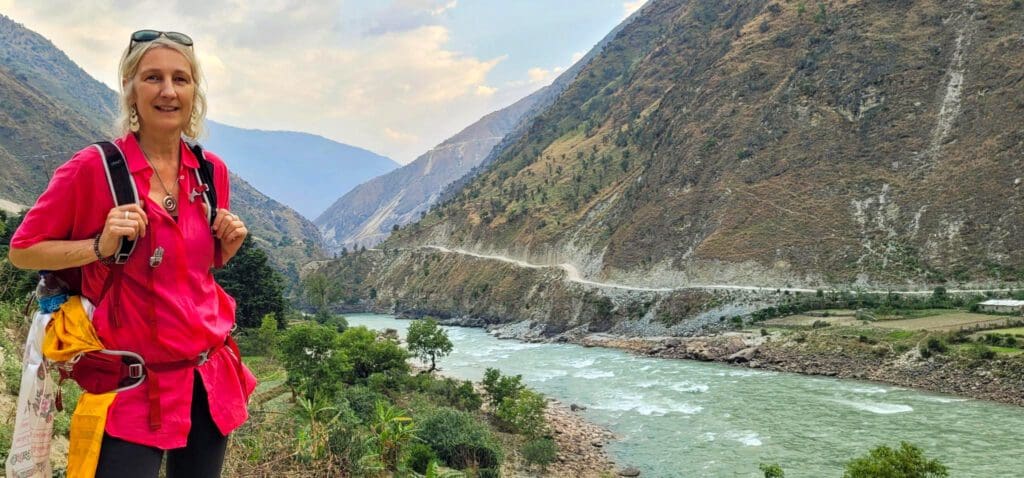
At noon we reach a suspension bridge that leads to the village of Hyanglu, located far up the mountain. Here, Back to Life built a school in 2019 and worked with villagers to plant lemon orchards to develop a sustainable income opportunity.
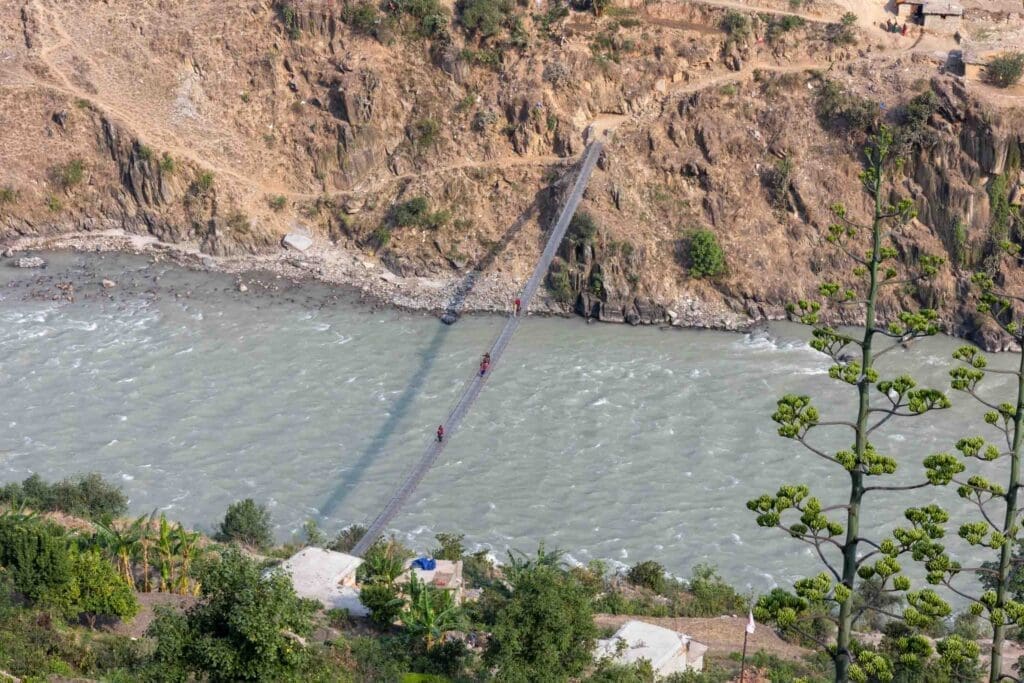
According to Nepalese tradition, guests are welcomed with a solemn ceremony. Already from far away we hear the drums of the shamans, who are waiting for us together with the inhabitants of the surrounding villages. Later, Stella tells me that for the residents of the area, the visit of strangers is a welcome change in their daily lives, which they can talk about for a long time afterwards. The people are colorfully dressed and have brought home-knotted chains of flowers or twigs, so-called malas, which are hung around us as a welcome. For this purpose, blood-red tikas, traditional blessings made of plant powder, are applied to the spot between our eyebrows. This is the traditional greeting.
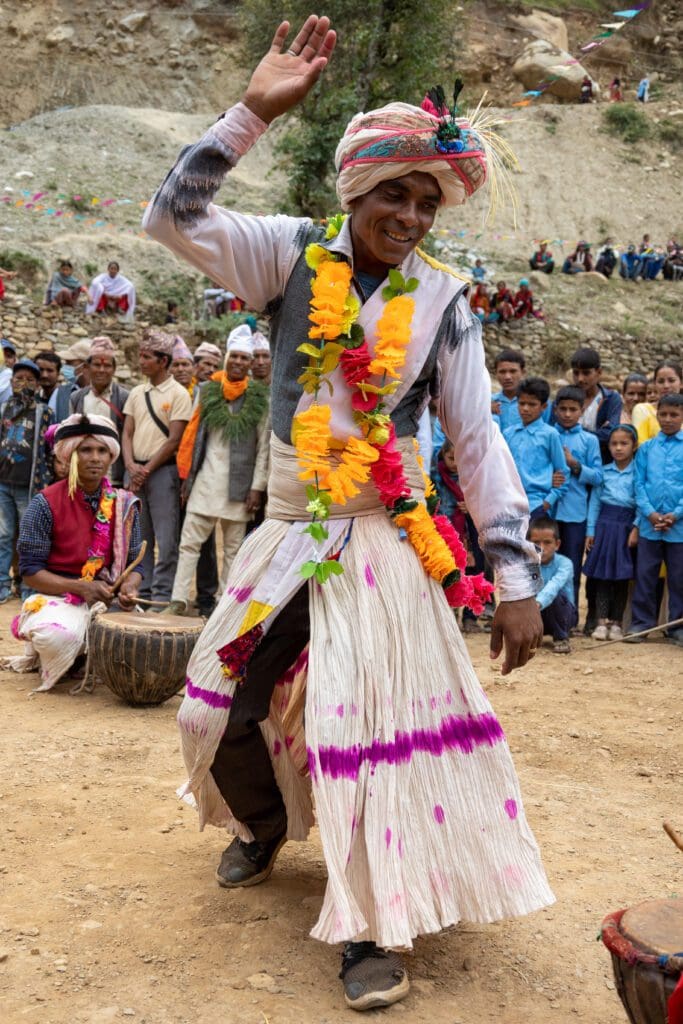
The malas press and scratch my neck, the sweaty climb to Hyanglu makes the color of the tika run over my face. My Nepalese colleague respectfully lets me know that I look scary and I try to wash the “blood” from my face with water from the water bottle, unfortunately unsuccessfully.
AT HOME WITH FRIENDS
Back on the other side of the suspension bridge we get back into the jeeps and continue towards Ratapani. Late in the evening, it has been dark for a long time, we finally arrive. Since there is no street lighting in the mountain villages and light pollution is still a foreign word here, we can’t see our hand in front of our eyes when the jeep stops the engine. Fortunately, everyone in our group already has his headlamp on his head, without which we would break our necks on the dirt road to our host’s house.
Since there are hardly any hotels or guest houses in the mountains of Mugu, an employee of our partner organization accommodates us in his house. I share a room with Stella and am happy that I brought my inflatable mattress from Germany. The room has two windows with shutters, but no windows. Above our sleeping places on the ceiling sit a few six-legged animals, but they do not bother us, only the scorpion we chased out. Fortunately, the house has a solar panel on the roof, so there is the luxury of a light bulb in our room and in the kitchen. There is no refrigerator, TV or furniture except for the beds. A heater certainly not. In the yard there is a table with plastic chairs for guests.
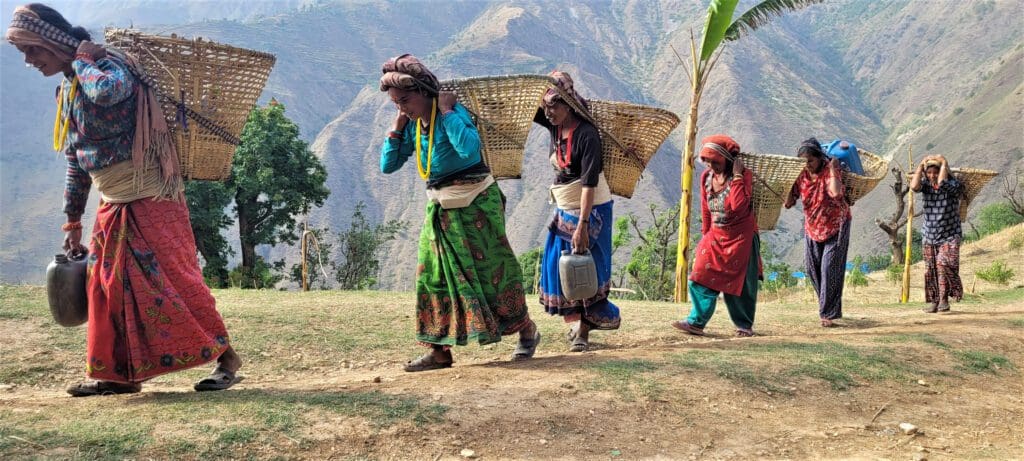
The next morning, I use the women’s washing facility, an area carefully draped with cloths for privacy, located outdoors behind the house. The water is brought in a bucket, for showering there is a ladle. The men simply wash at the water point in front of the house, which is fed by a 500 L water tank that has to be filled again and again. There is no bathroom in any house in the mountain villages. Most mountain villages do not even have water points in the village, let alone in front of the house. So we are wallowing in luxury with our water situation.
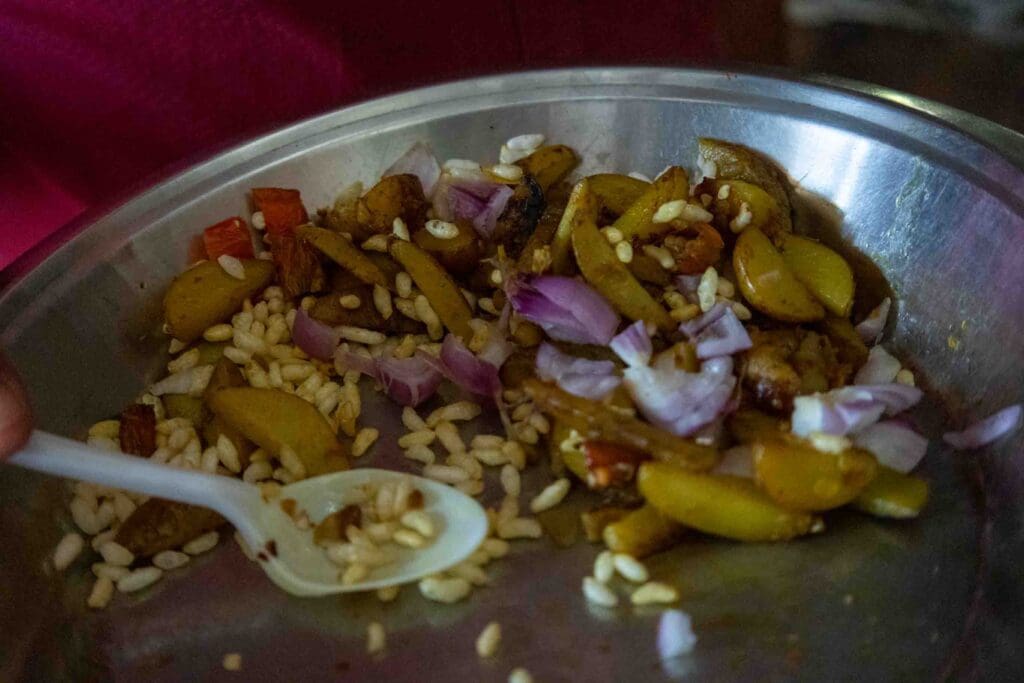
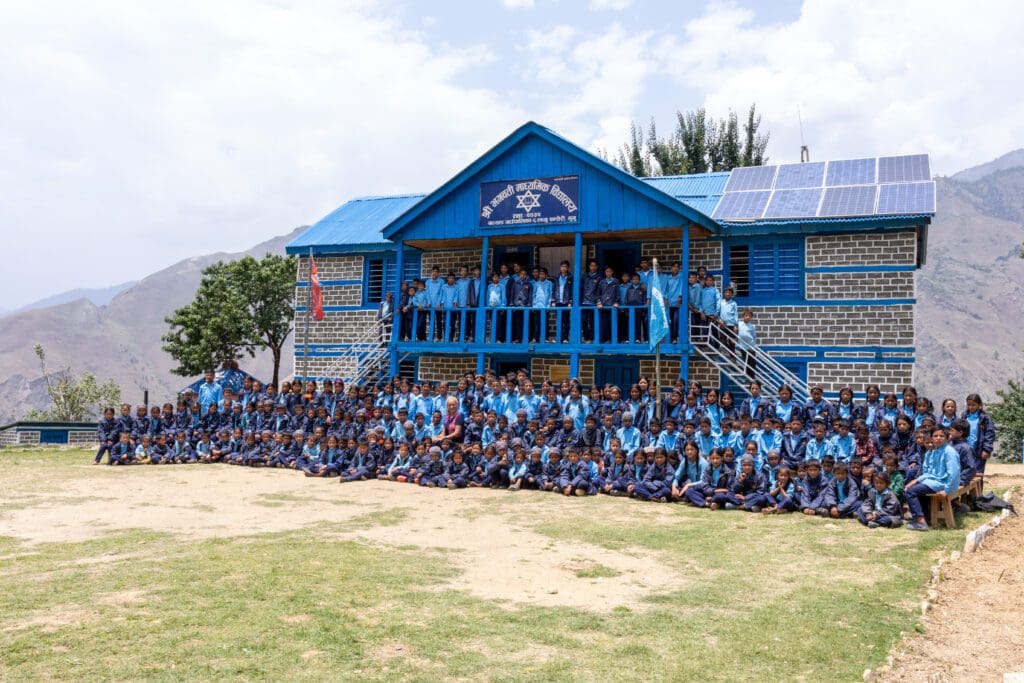
After breakfast (Dal Bhat) the inauguration ceremony of the school will take place. It is the largest and most solid building I have seen so far in Mugu, two stories high, earthquake proof, painted yellow and with an accessible toilet block. As in Hyanglu, we will be welcomed by the villagers with malas and tikas, drumming, dancing and singing. The ceremony lasts several hours.
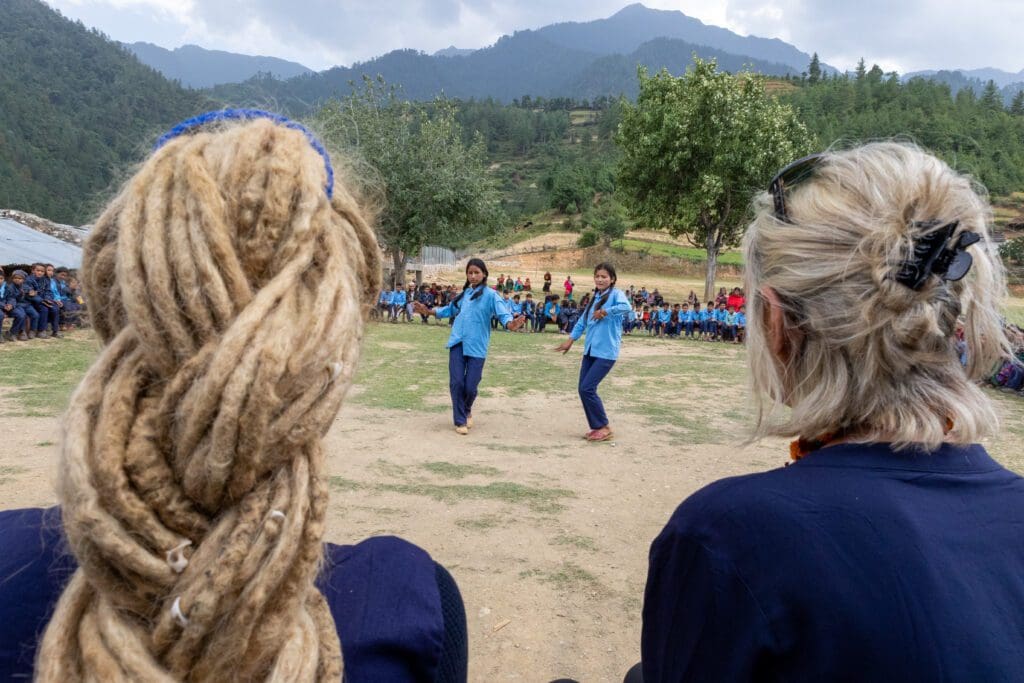
To get to know life and culture better, Stella takes me on a walk through the village the next day. It goes along the river, on the banks of which the farmers are preparing the rice terraces for the soon to begin monsoon. In a picturesque scenic idyll, farmers with their ox teams and medieval-looking plows pull the furrows in the already irrigated soil. In some terraces, the rice is already 30 cm high and shines in such an intense green that I can hardly avert my eyes. From previous trips to Asia, I know that these are the seedlings that are later planted in the prepared terraces when the monsoon has set in – each plant individually and by hand.
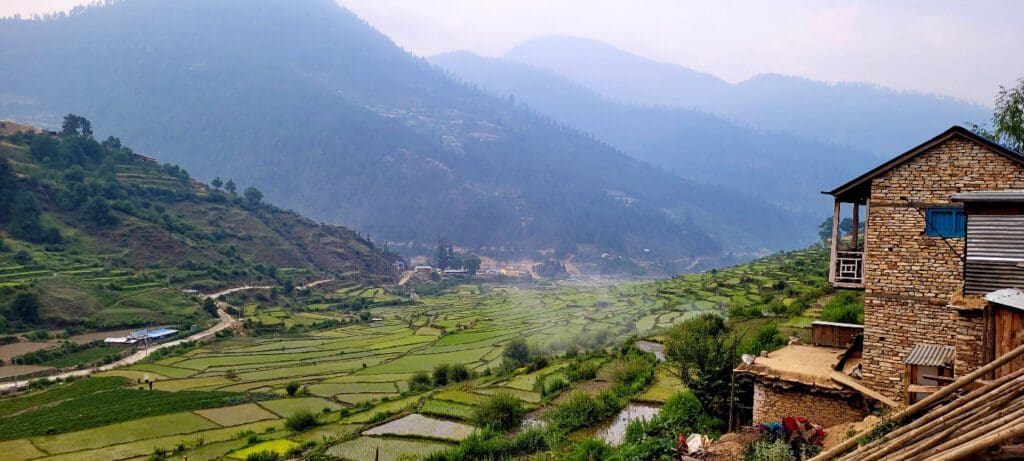
As we walk through the rice fields, barefoot and always balancing on the narrow mud walls that separate the terraces from each other, we realize that Thorsten has been following us stealthily. Thorsten is a typical Nepalese mongrel dog, who has not left our side since our arrival in Ratapani and even sleeps in front of our door at night. Since no one can tell who the dog belongs to and every dog needs a name, we named him Thorsten. He doesn’t seem to mind, the main thing is that he can be there. Animal lover that I am, I am pleased to see that all the dogs I get to see look well fed and healthy. And that, although most people in the mountains themselves do not have much to eat. In any case, there is no canned food here.
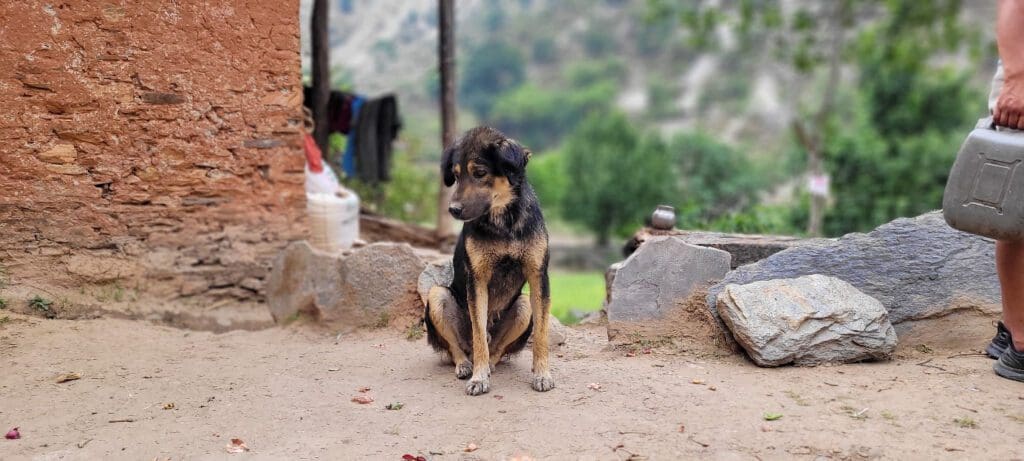
Our next destination is the mountain village of Gamtha, where Back to Life has built a birthplace. The mountain road, if you want to call it that, is so bad that we hit our heads on the roof every minute for a whole three hours. In addition, 12 people sit in the vehicle, which in Germany would be registered for six people. After half an hour, I look back at a bend in the road the way we came and see that Thorsten has taken it upon himself to run after us. At first I am touched, then I suspect that the faithful comrade will probably not miss the opportunity to follow us to the point of complete exhaustion. It’s steep uphill and downhill – a killer stretch. The rest of the ride I hope Thorsten gives up and runs back to the village.
At sunset we finally arrive in Gamtha. We get out, stretch our limbs, shoulder our luggage and off we go up the hill to the birthplace. At this moment Thorsten comes around the corner – completely knocked out, with his head hanging and totally filthy. We can not believe it and welcome our fur friend. So much loyalty and perseverance deserves recognition. Thorsten is allowed to accompany us onto the fenced-in grounds of the birthplace, which are otherwise absolutely off-limits to dogs. There is water and rice and to make the happy ending complete, the leader of our partner organization, who accompanied us the last days, decides to adopt Thorsten.
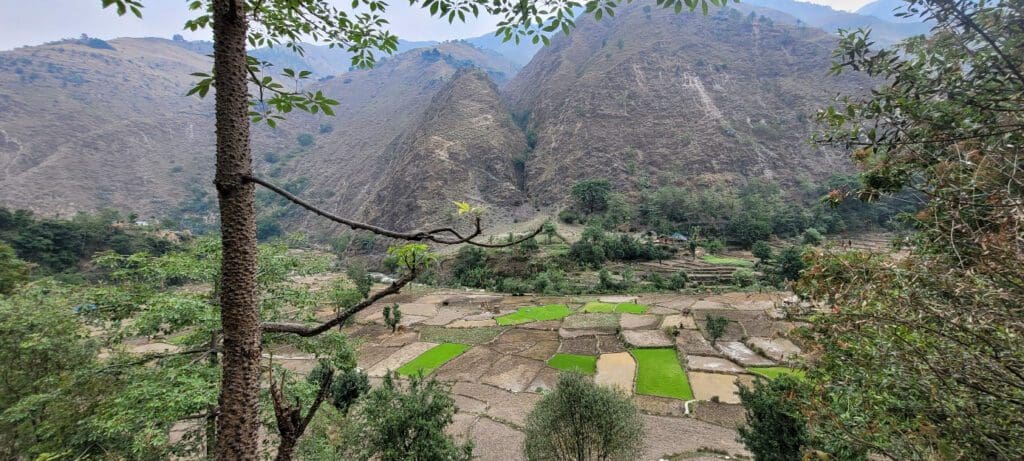
A place of rest and strength
The birthplace is prominently located on a ridge. It is a beautiful, blue and white, one-story brick building with a separate kitchen, vegetable garden and its own playground for the children whose mothers come here for pre- and post-natal care.
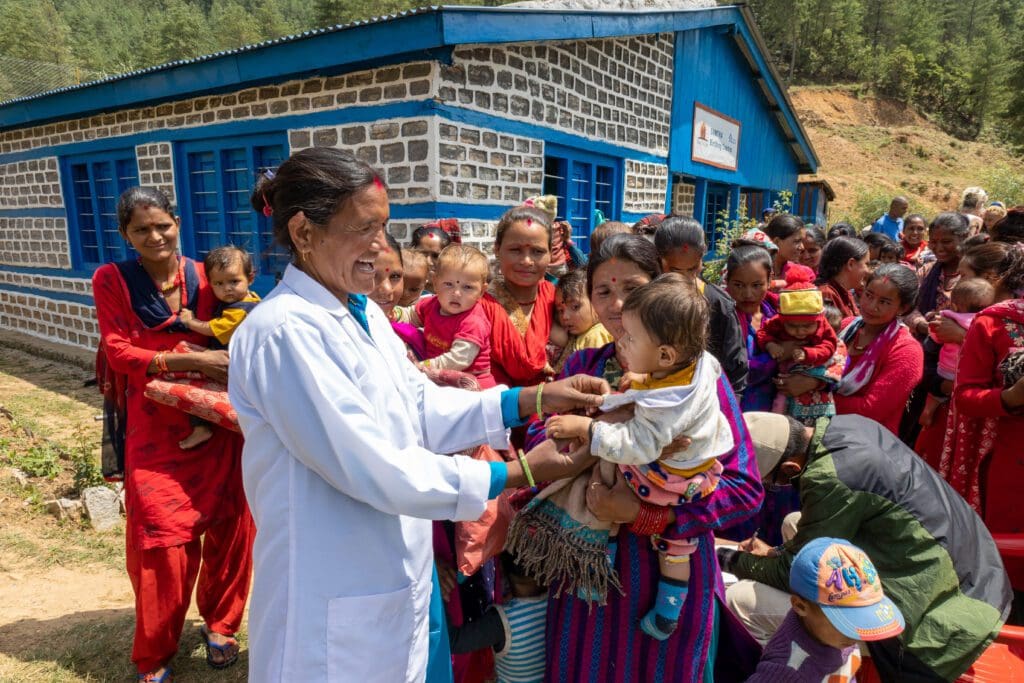
The atmosphere is touching, the view into the valley breathtaking – a wave of emotion overcomes me and tears come to my eyes. I imagine the women who are allowed to safely give birth to their children here. Here, our professional midwives provide mothers with the knowledge they need to give babies the best possible chance of a good start.
Home visit in the mountains
After two impressive days in the Gamtha birthplace, I continue my journey towards Libru together with my Nepalese colleagues. In this remote village on the Karnali River, Back to Life will host one of this year’s five health camps in the coming days, giving more than 2,400 women, men and children the opportunity to consult a doctor.
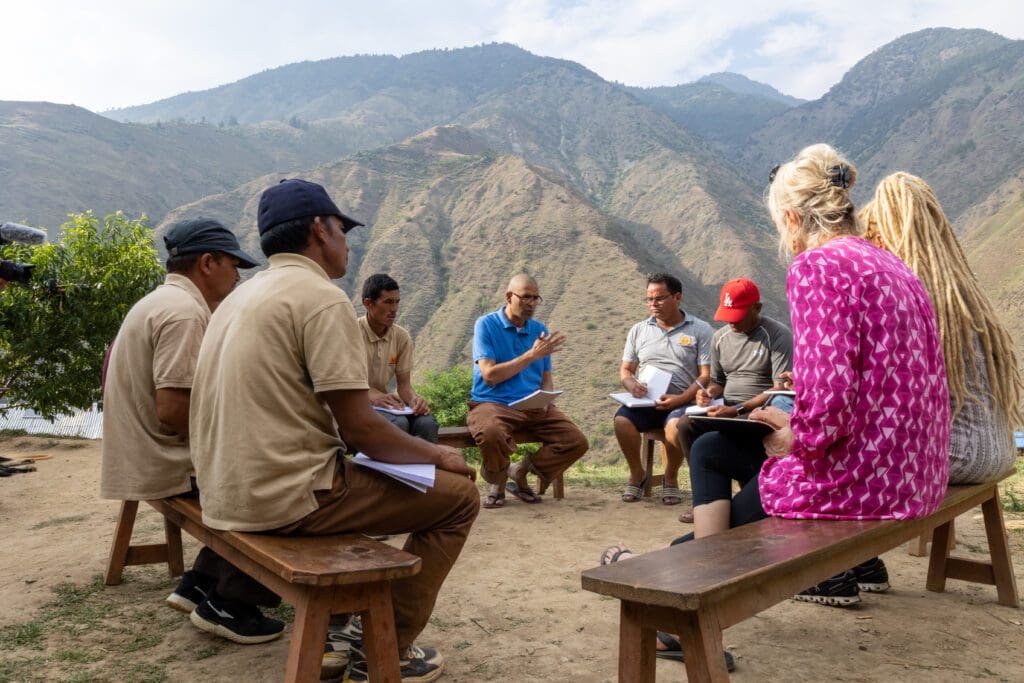
Twelve hours and countless bumps on the head later, our driver, who has mastered countless landslides and a flat tire, finally reaches the destination. We will be accommodated in the school of Libru, where the health camp will also take place. A blanket on the floor forms the sleeping place. A little later, the doctors, assistants and Back to Life midwives also arrive and my Nepalese colleague Anup, who is in charge of the health camp, introduces all the people involved in a meeting and explains the schedule for the next few days.
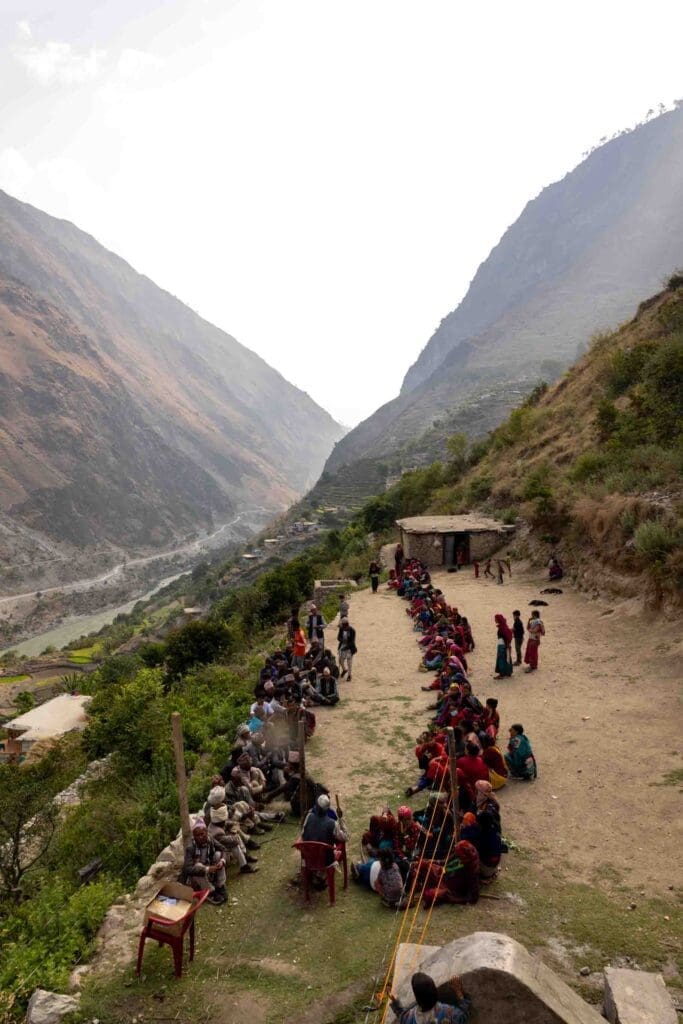
During dinner we exchange our expectations. Seven physicians from the specialties of internal medicine, pediatrics, gynecology, ENT and pharmacy have traveled especially from Kathmandu. None of them has ever been to this remote mountain region, but all of them have the same motive to participate: to give something back to the people who are less privileged than themselves.
At four o’clock the night is over. The first patients are already arriving at the health camp, many of whom have been out all night to see a doctor. Around eight o’clock, hundreds are already waiting. I watch as doctors, assistants and Back to Life staff give their all for four days to accommodate each patient, how acute illnesses are treated and how each patient is educated on how to avoid contagious and non-contagious illnesses. In some patients, doctors diagnose illnesses that make transfer to a lowland hospital for immediate treatment unavoidable. Our team also takes care of this devotedly for the following weeks (and sometimes months).
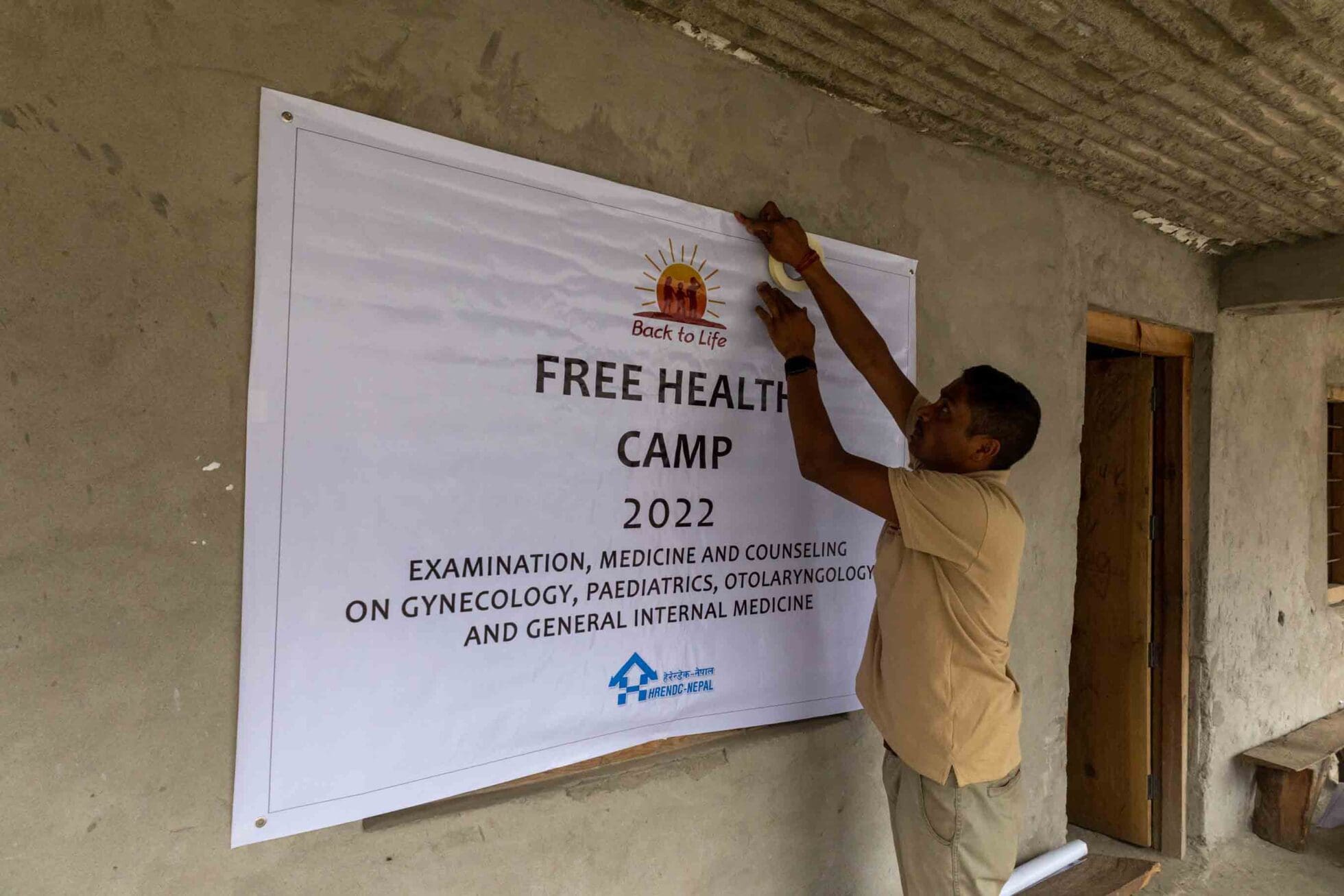
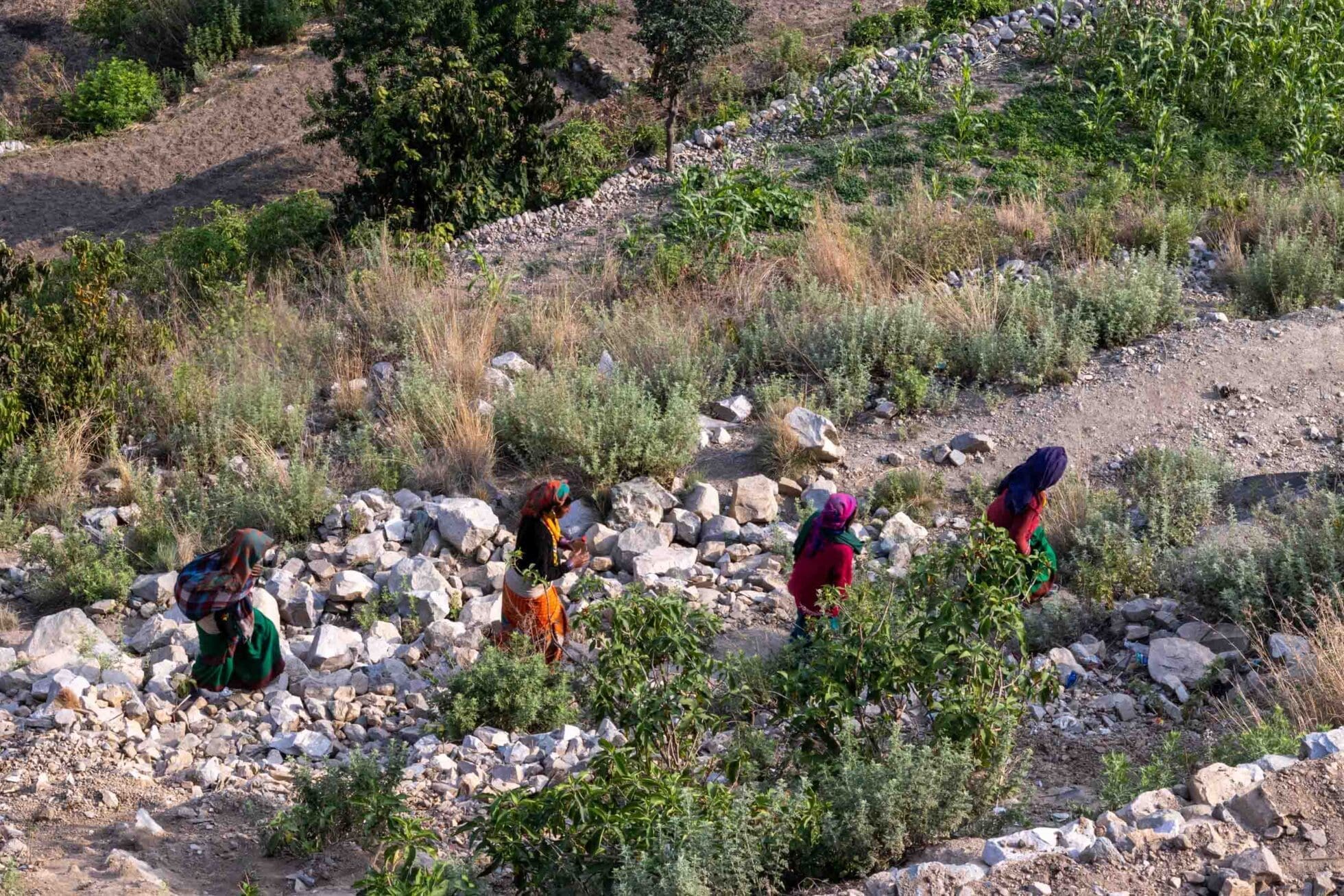
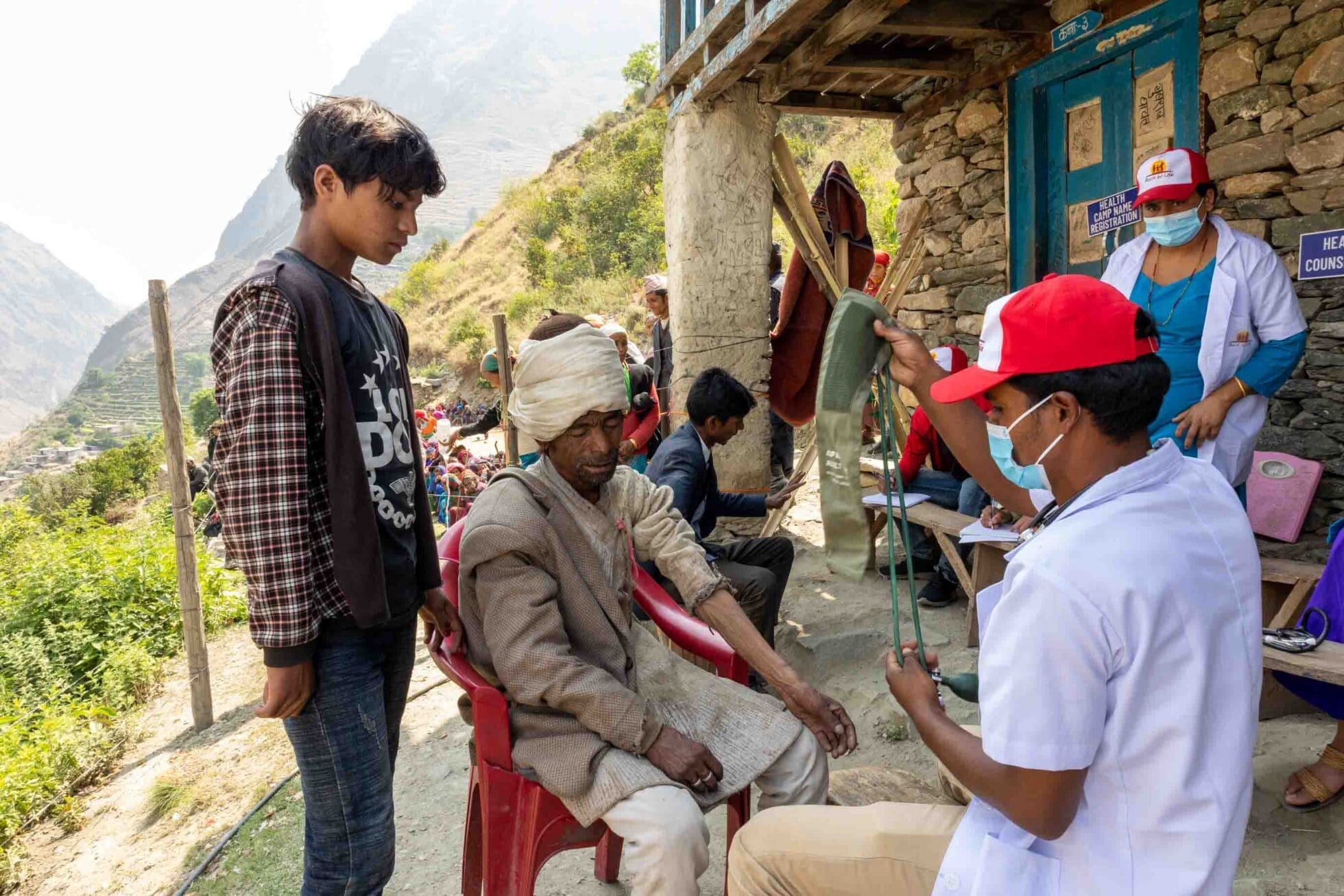
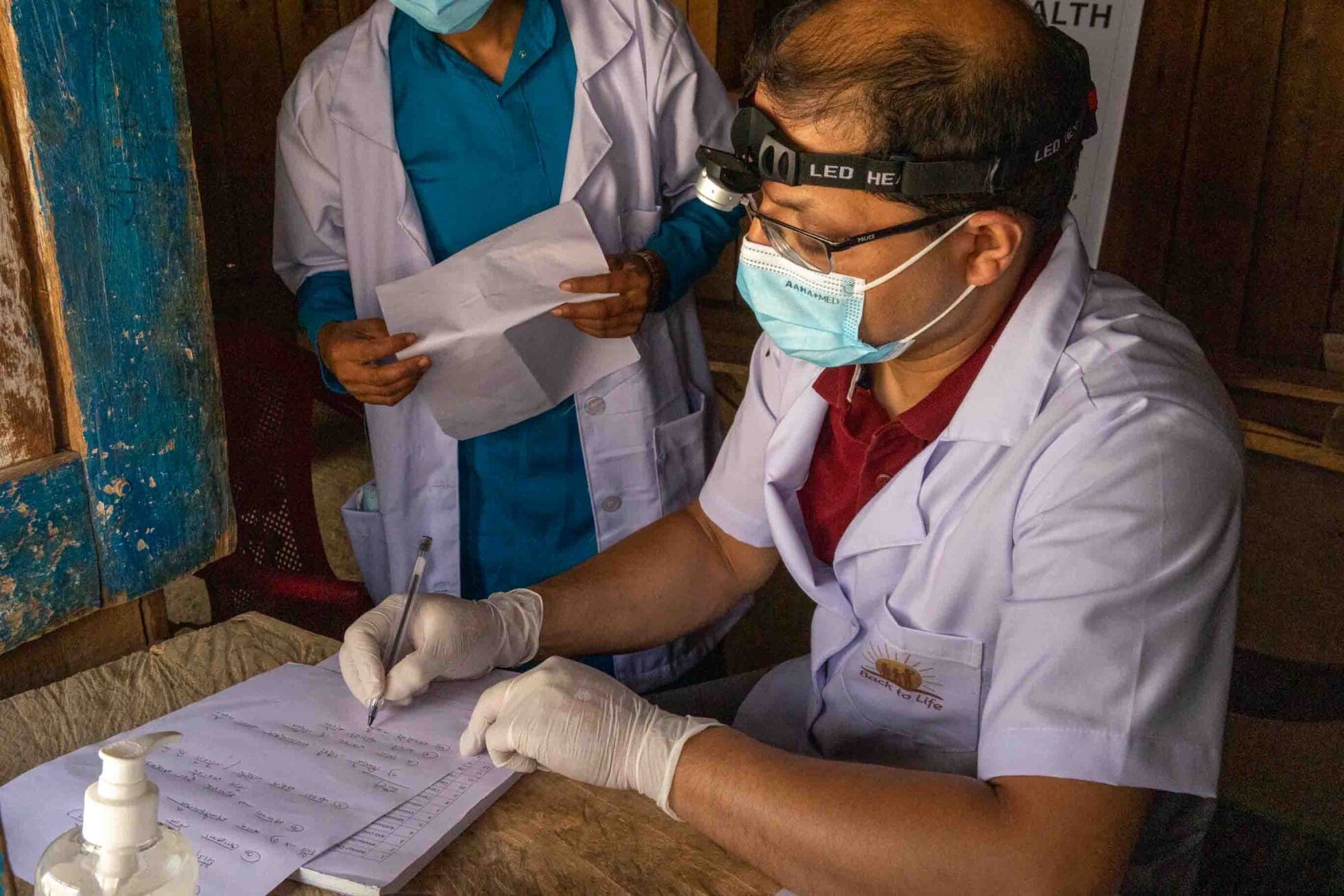
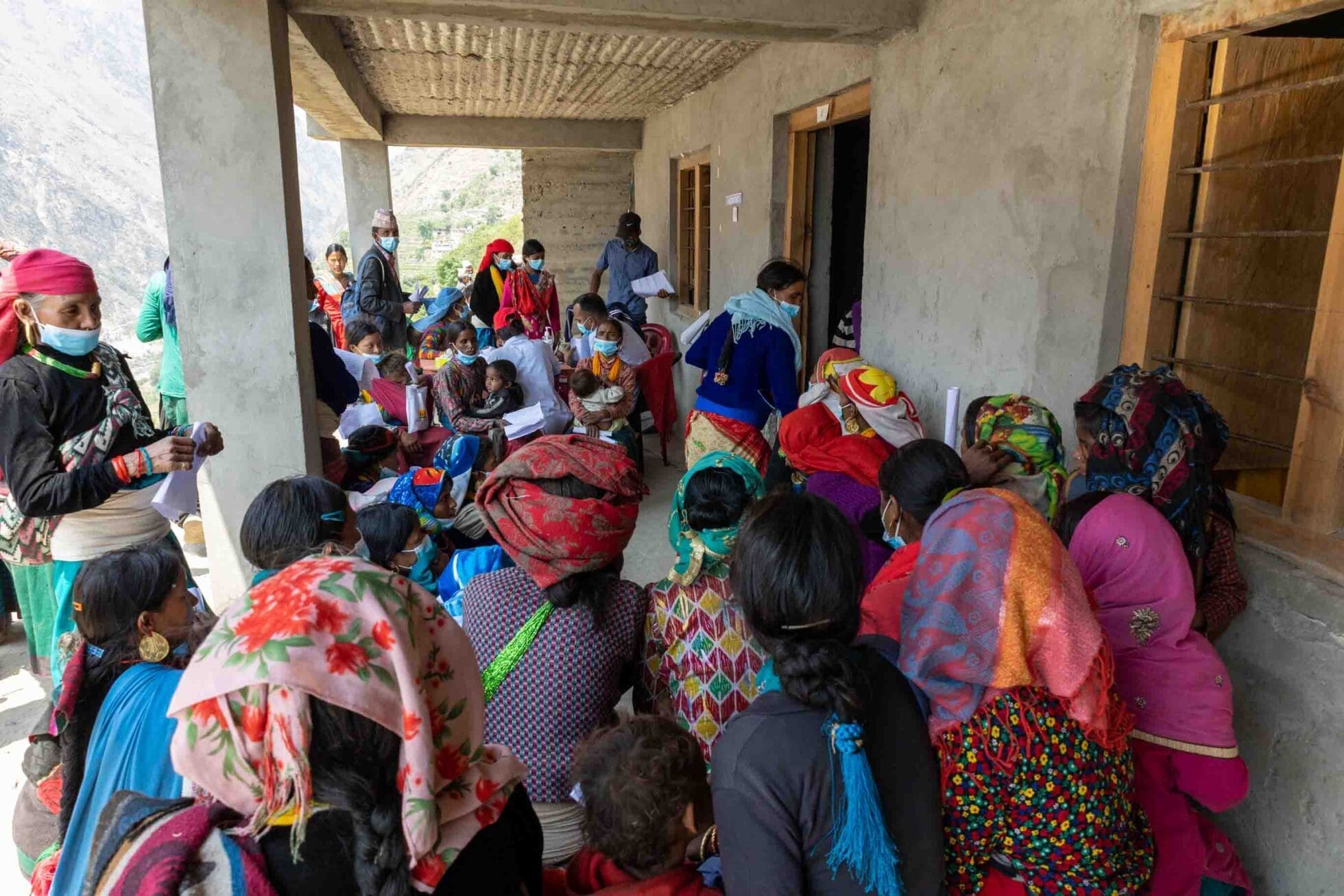
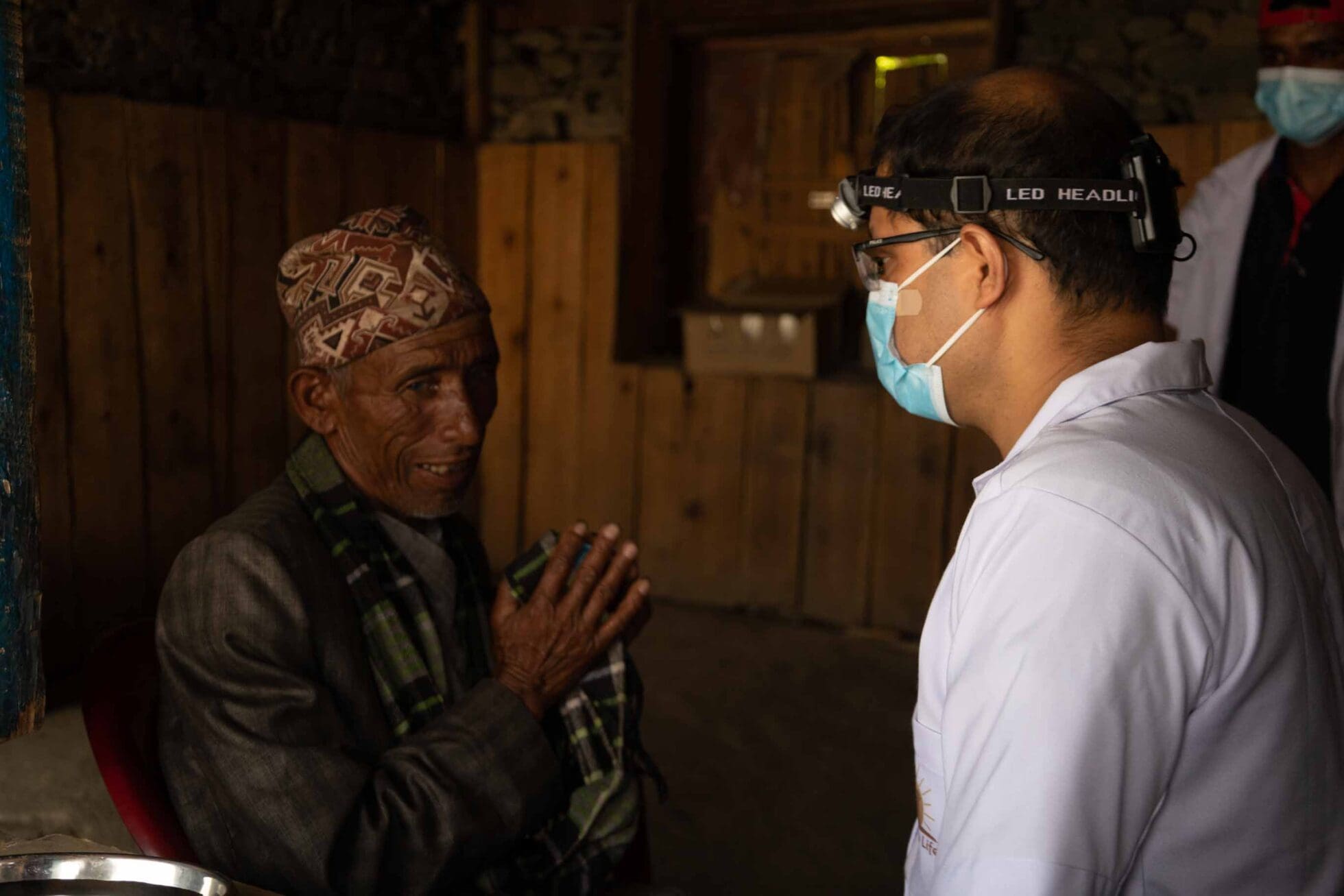
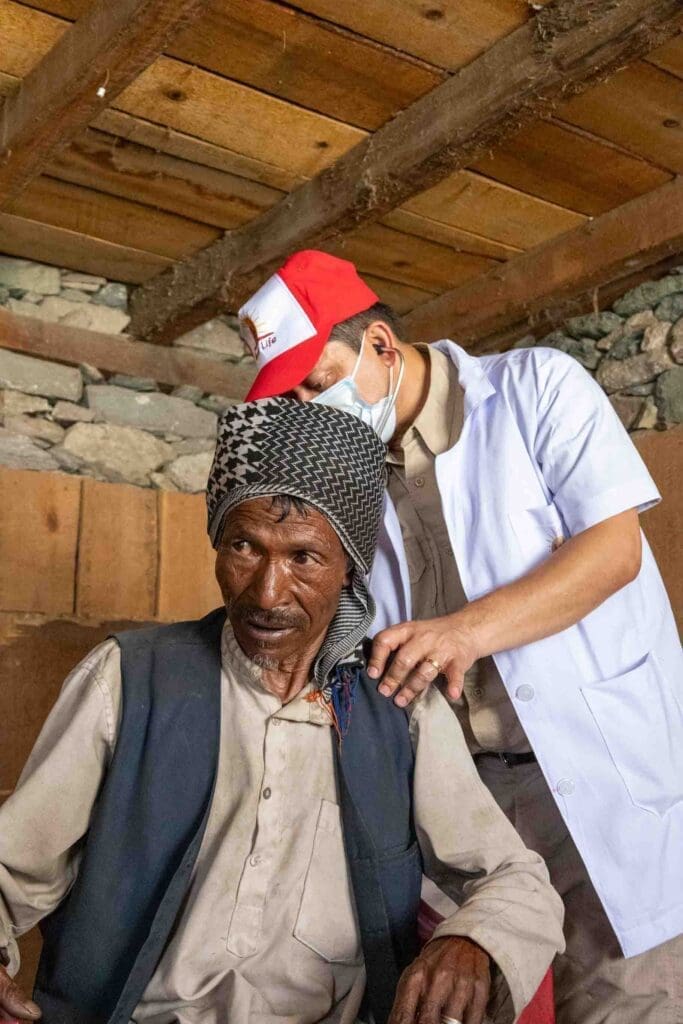
I have hope that the Nepalese government will improve the health system in Mugu in the coming years and that people living here will no longer have to wait exclusively to visit our health camp to consult a doctor. But until then, a lot of water will flow down the Karnali River.
With the end of the health camp, my time in Mugu is also coming to an end. In a breakneck (landslides, floods, falling rocks, huge road holes) but also breathtakingly beautiful drive (mountain panoramas, rice fields, rivers, people in their everyday situations) we cover 500 km in a jeep to reach Kathmandu. The trip takes four days and gives me the opportunity to see more of Nepal.
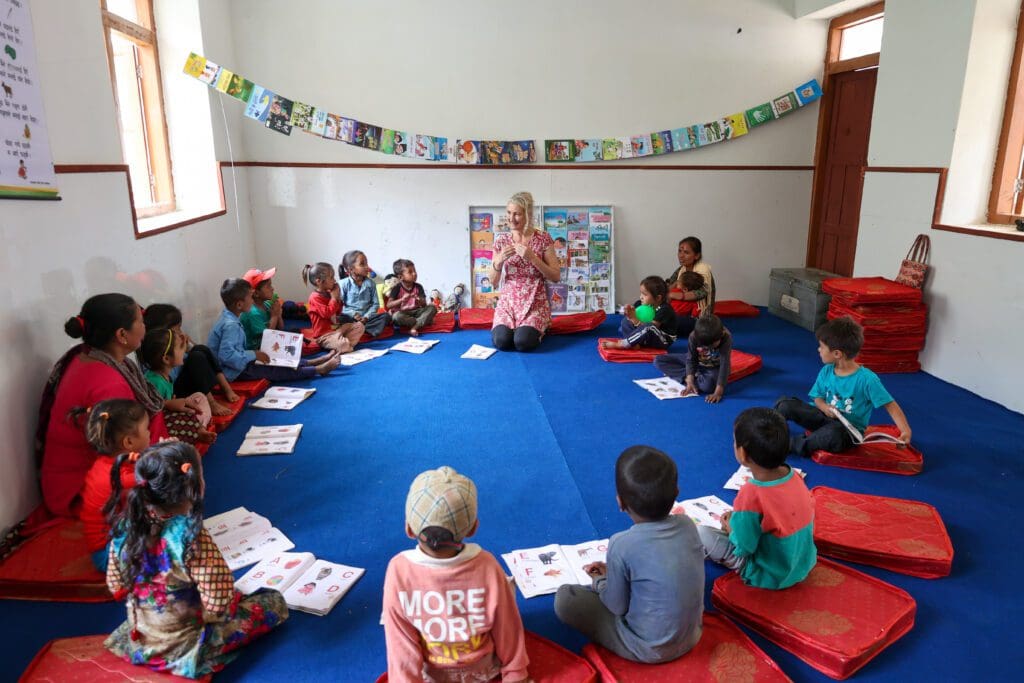
Even today, months after my trip, I can only say: I am already looking forward to my next visit to Nepal. Stella and my dear Nepalese colleagues, whom I was allowed to accompany, who patiently answered my every question and who were always concerned about my well-being, I thank from the bottom of my heart for these impressions and experiences.
Namaste.
